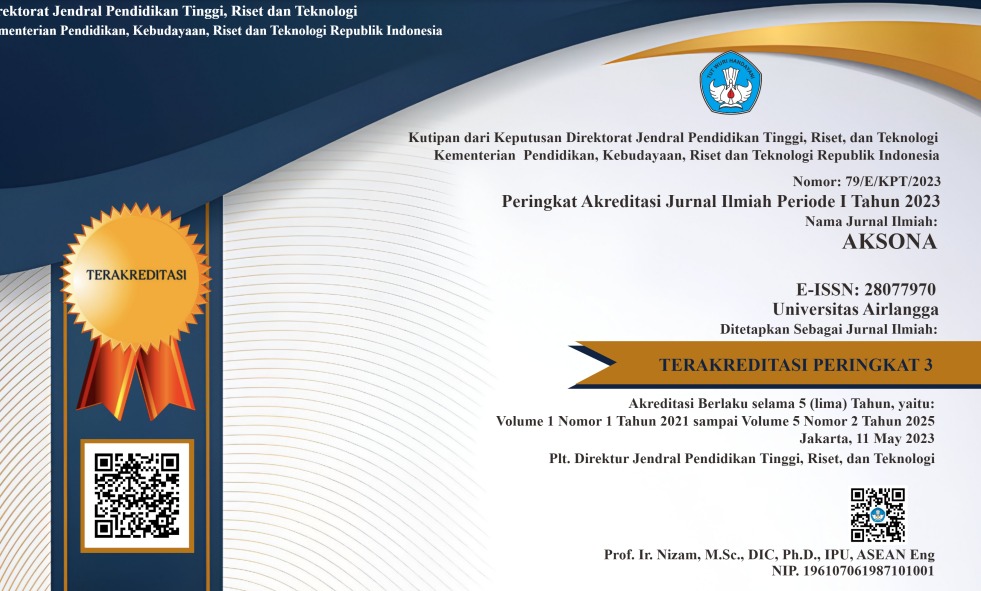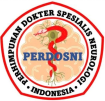Neuroimaging and Intravenous Recombinant Tissue Plasminogen Activator in Acute Ischemic Stroke beyond 4.5 Hours: A Systematic Review
Downloads
Highlight:
- Ischemic stroke is a major cause of disability and death globally, emphasizing the urgent need for timely and effective thrombolytic interventions within a narrow treatment window.
- Neuroimaging has the potential to extend the therapeutic window for IV rt-PA beyond 4.5 hours, allowing clinicians to identify patients with salvageable brain tissue for treatment.
- Extending the IV rt-PA treatment window with neuroimaging support can significantly improve outcomes in stroke patients, although careful risk assessment is crucial.
ABSTRACT
Introduction: Current guidelines suggest giving intravenous recombinant tissue plasminogen activator (rt-PA) within 4.5 hours after acute ischemic stroke onset or the time the patient was last-seen-well. Patients often arrive at the hospital after 4.5 hours, making thrombolysis treatment challenging. It is crucial to examine expanding this timeframe beyond 4.5 hours of onset or last-seen-well. Objective: This systematic review intended to examine the effectiveness and safety of IV rt-PA in patients presenting to the hospital beyond 4.5 hours of onset or last-seen-well. Methods: We searched PubMed, Scopus, and ScienceDirect for studies on acute ischemic stroke patients treated with IV rt-PA alteplase beyond 4.5 hours of onset or last-seen-well. Outcomes comprised the Modified Rankin Scale (mRS) score, intracranial hemorrhage (ICH), symptomatic ICH, and mortality. We assessed the risk of bias using Cochrane Risk of Bias Vol 2 and ROBINS-I. Results: Eleven randomized controlled trials and observational studies were selected. Most subjects were above 65 years, and their baseline mean or median NIHSS scores were 6–12. Seven studies had specific neuroimaging criteria for eligibility, such as DWI/FLAIR or T2WI mismatch, PWI/DWI mismatch, or CT/MR perfusion. In RCTs, alteplase group had 47.1% to 53.3% favourable results (mRS 0-1) compared to 41.3% to 48.3% in placebo/controls group and 23% to 85% in observational studies. Compared to the placebp/control group and onset within 4.5 hours, alteplase typically had better ourcomes. However, ICH, symptomatic ICH, and mortality were numerically higher, albeit not statistically significant. Conclusion: IV rt-PA alteplase can be given for up to 9-12 hours from onset or last-seen-well with neuroimaging evidence of salvageable tissue, such as the perfusion imaging RAPID criteria or DWI/FLAIR or T2WI mismatch, taking consideration of hemorrhage and mortality concerns.
Saini V, Guada L, Yavagal DR. Global epidemiology of stroke and access to acute ischemic stroke interventions. Neurology. 2021; 97(20 Supplement 2):S6–16. doi: 10.1212/WNL.0000000000012781
Al Sultan AS, Hill MD. Acute ischemic stroke bilogy demands fast treatment. Circulation. 2018; 138(3):241–3. doi: 10.1161/CIRCULATIONAHA.118.034653
Powers WJ, Rabinstein AA, Ackerson T, Adeoye OM, Bambakidis NC, Becker K, et al. Guidelines for the early management of patients with acute ischemic stroke: 2019 update to the 2018 guidelines for the early management of acute ischemic stroke: A guideline for healthcare professionals from the American Heart Association/American Stroke . Stroke. 2019; 50(12):e344–418. doi: 10.1161/STR.0000000000000211
Fassbender K, Balucani C, Walter S, Levine SR, Haass A, Grotta J. Streamlining of prehospital stroke management: The golden hour. Lancet Neurol. 2013; 12(6):585–96. doi: 10.1016/S1474-4422(13)70100-5
Albers GW, Marks MP, Kemp S, Christensen S, Tsai JP, Ortega-Gutierrez S, et al. Thrombectomy for stroke at 6 to 16 hours with selection by perfusion imaging. N Engl J Med. 2018; 378(8):708–18. doi: 10.1056/NEJMoa1713973
Nogueira RG, Jadhav AP, Haussen DC, Bonafe A, Budzik RF, Bhuva P, et al. Thrombectomy 6 to 24 hours after stroke with a mismatch between deficit and infarct. N Engl J Med. 2018; 378(1):11–21. doi: 10.1056/NEJMoa1706442
Ma H, Campbell BCV, Parsons MW, Churilov L, Levi CR, Hsu C, et al. Thrombolysis guided by perfusion imaging up to 9 hours after onset of stroke. N Engl J Med. 2019; 380(19): 1795–803. doi: 10.1056/NEJMoa1813046
Thomalla G, Simonsen CZ, Boutitie F, Andersen G, Berthezene Y, Cheng B, et al. MRI-Guided thrombolysis for stroke with unknown time of onset. N Engl J Med . 2018; 379(7):611–22. doi: 10.1056/NEJMoa1804355
Simpkins AN, Tahsili-Fahadan P, Buchwald N, De Prey J, Farooqui A, Mugge LA, et al. Adapting clinical practice of thrombolysis for acute ischemic stroke beyond 4.5 Hours: A review of the literature. J Stroke Cerebrovasc Dis. 2021; 30(11):106059. doi: 10.1016/j.jstrokecerebrovasdis.2021.106059
Page MJ, McKenzie JE, Bossuyt PM, Boutron I, Hoffmann TC, Mulrow CD, et al. The PRISMA 2020 statement: An updated guideline for reporting systematic reviews. BMJ. 2021; 372:n71. doi: 10.1136/bmj.n71
Sterne JAC, Savović J, Page MJ, Elbers RG, Blencowe NS, Boutron I, et al. RoB 2: A revised tool for assessing risk of bias in randomised trials. BMJ. 2019; 366:l4898. doi: 10.1136/bmj.l4898
Sterne JA, Hernán MA, Reeves BC, Savović J, Berkman ND, Viswanathan M, et al. ROBINS-I: A tool for assessing risk of bias in non-randomised studies of interventions. BMJ. 2016; 355:i4919. doi: 10.1136/bmj.i4919
Koga M, Yamamoto H, Inoue M, Asakura K, Aoki J, Hamasaki T, et al. Thrombolysis with alteplase at 0.6 mg/kg for stroke with unknown time of onset. Stroke. 2020; 51(5):1530–8. doi: 10.1161/STROKEAHA.119.028127
Schwamm LH, Wu O, Song SS, Latour LL, Ford AL, Hsia AW, et al. Intravenous thrombolysis in unwitnessed stroke onset: MR WITNESS trial results. Ann Neurol. 2018; 83(5):980–93. doi: 10.1002/ana.25235
Wang H, Chen M, Wang F, Dai L, Fei A, Liu J, et al. Comparison of therapeutic effect of recombinant tissue plasminogen activator by treatment time after onset of acute ischemic stroke. Sci Rep. 2015; 5(1):11743. doi: 10.1038/srep11743
Ringleb P, Bendszus M, Bluhmki E, Donnan G, Eschenfelder C, Fatar M, et al. Extending the time window for intravenous thrombolysis in acute ischemic stroke using magnetic resonance imaging-based patient selection. Int J Stroke. 2019; 14(5):483–90. doi: 10.1177/1747493019840938
Altersberger VL, Sibolt G, Enz LS, Hametner C, Scheitz JF, Henon H, et al. Intravenous thrombolysis 4.5–9 hours after stroke Onset: A cohort study from the TRISP collaboration. Ann Neurol. 2023; 94(2):309–20. doi: 10.1002/ana.26669
Gumbinger C, Reuter B, Stock C, Sauer T, Wietholter H, Bruder I, et al. Time to treatment with recombinant tissue plasminogen activator and outcome of stroke in clinical practice: Retrospective analysis of hospital quality assurance data with comparison with results from randomised clinical trials. BMJ. 2014; 348:g3429. doi: 10.1136/bmj.g3429
Bai Q, Zhao Z, Lu L, Shen J, Zhang J, Sui H, et al. Treating ischaemic stroke with intravenous tPA beyond 4.5 hours under the guidance of a MRI DWI/T2WI mismatch was safe and effective. Stroke Vasc Neurol. 2019: 8–13. doi: 10.1136/svn-2018-000186
Cortijo E, García-Bermejo P, Calleja AI, Pérez-Fernández S, Gómez R, del Monte JM, et al. Intravenous thrombolysis in ischemic stroke with unknown onset using CT perfusion. Acta Neurol Scand. 2014; 129(3):178–83. doi: 10.1111/ane.12160
Huang Q, Song H, Ma Q, Song X, Wu J. Effects of time delays on the therapeutic outcomes of intravenous thrombolysis for acute ischemic stroke in the posterior circulation: An observational study. Brain Behav. 2019; 9(2). doi: 10.1002/brb3.1189
Adil MM, Luby M, Lynch JK, Hsia AW, Kalaria CP, Nadareishvili Z, et al. Routine use of FLAIR-negative MRI in the treatment of unknown onset stroke. J Stroke Cerebrovasc Dis. 2020; 29(9):105093. doi: 10.1016/j.jstrokecerebrovasdis.2020.105093
Copyright (c) 2025 Muhammad Ramadhan Ghifari, Resa Budi Deskianditya, Pradana Nur Oviyanti, Yuki Fitria Maatisya, Vega Pratiwi Putri

This work is licensed under a Creative Commons Attribution-ShareAlike 4.0 International License.





















